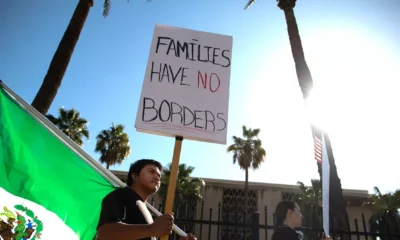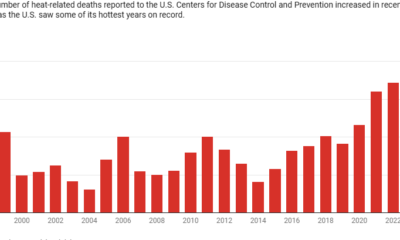Business
Trump Targets Low-Income Energy Aid as Summer Heat Waves and Rising Electricity Costs Loom

The U.S. is bracing for a potentially record-breaking summer, with soaring temperatures expected to impact millions. As energy prices climb, many households will find it increasingly difficult to afford their power bills. A recent national survey highlights that nearly 25% of Americans have struggled to pay their energy bills at least once this year, while another 25% reported compromising home temperatures to save money. By 2025, forecasts indicate that three-quarters of Americans will be concerned about rising energy expenses.
In response to these challenges, the Trump administration took significant actions. On his first day of a second term in 2025, President Donald Trump declared a national energy emergency. “High energy prices … devastate Americans, particularly those living on low- and fixed incomes,” he stated. Secretary of Energy Christopher Wright echoed these concerns, vowing to eliminate utility disconnections. However, the administration proposed cutting the Low Income Home Energy Assistance Program (LIHEAP) budget entirely for 2026, and in April 2025, laid off the entire LIHEAP staff.
The repercussions of these cuts will be felt across the nation. Many low-income families are already struggling to gather resources to pay their power bills. Research shows that low-income households often face dire choices: whether to buy necessities or pay utility bills. Sarah, an elderly participant in a recent study, revealed that she often skips medications to afford her utility payments. Another participant detailed entering homes so hot that it felt suffocating, illustrating the dire circumstances many are enduring.
These stories are increasingly common, particularly in marginalized communities. Rising electricity costs are expected due to climate change, which leads to more frequent heatwaves and demands from energy-intensive sectors like data centers. LIHEAP, initiated in 1981, has historically provided essential funding to assist low-income families, distributing $6.1 billion in 2023 alone. However, it has often struggled to meet demand; only 16% of eligible households received assistance in 2020.
With LIHEAP at risk, many families depend on non-profit organizations and informal networks for help. Deborah, another research participant, shared her experience of driving from church to church seeking assistance before ultimately succeeding. In 2023, United Way in South Carolina received over 16,000 requests for help with utility bills. Although charitable organizations play a critical role, their reach is limited compared to public programs, and without LIHEAP, these resources will be further strained.
The urgency is clear, particularly as pressure mounts on these organizations amid funding cuts. Maricopa County in Arizona exemplifies the potential consequences; annual heat-related deaths have surged by 1,000% in the last decade. Many of these tragedies occurred indoors, raising alarms about the implications of reducing energy assistance.
To ensure energy affordability and protect lives, immediate action is necessary. Expanding LIHEAP funding and enhancing home weatherization programs are viable pathways. Additionally, governments might consider implementing measures to prevent utility shut-offs during extreme weather, as two dozen states have already done. The cuts to LIHEAP staff threaten essential aid just as another scorching summer approaches. It is crucial that federal support expands rather than contracts to prevent further hardship among vulnerable populations.
Etienne Toussaint, a law professor at the University of South Carolina, and Ann Eisenberg, a law professor at West Virginia University, contributed to this article.


















